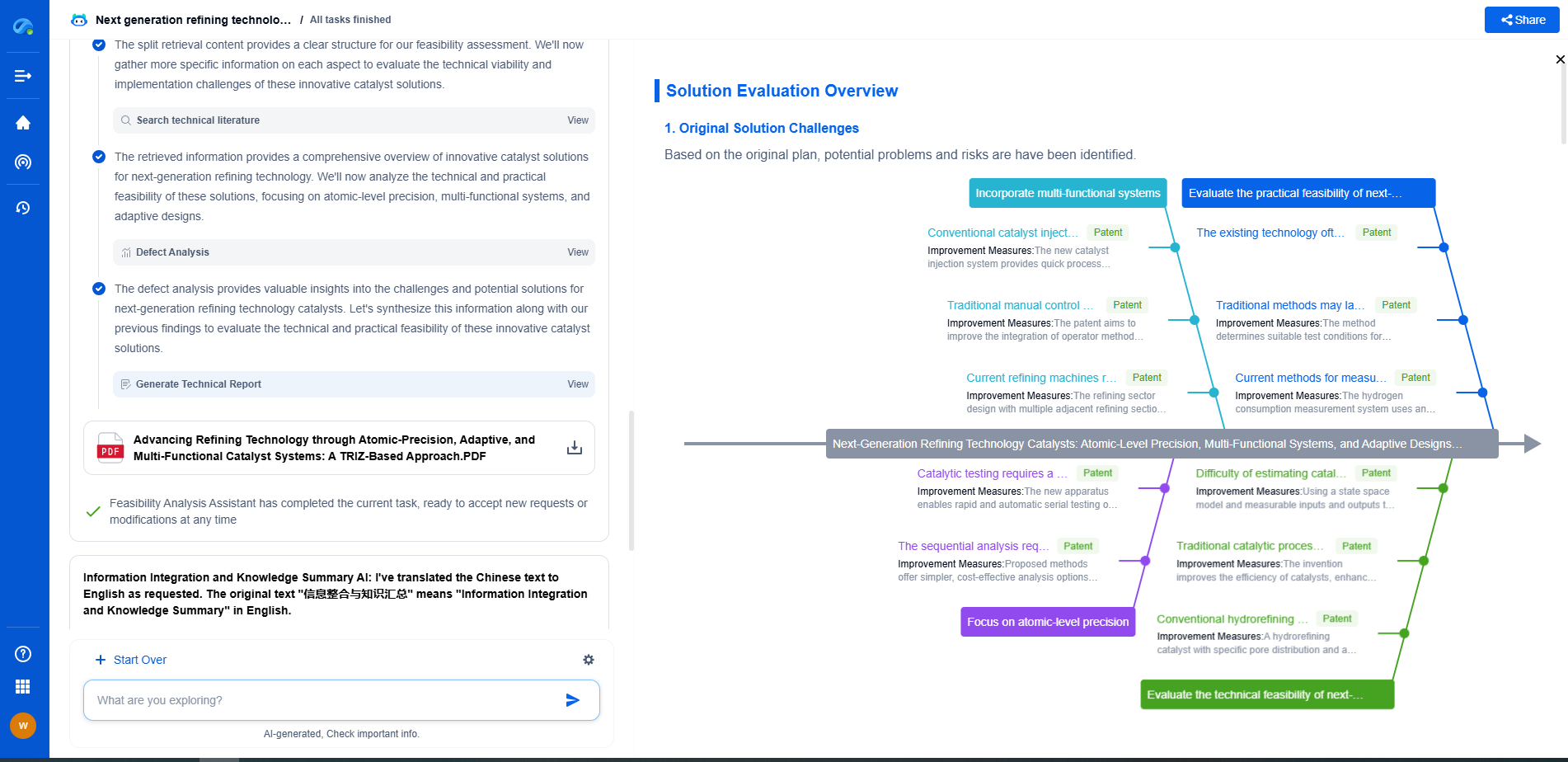Collaborative Robots vs. Industrial Arms for Small-Batch Assembly
JUN 26, 2025 |
In today's rapidly evolving manufacturing landscape, businesses are increasingly shifting towards small-batch production. This change is driven by the need for customization, reduced lead times, and the demand for higher quality products. In the realm of automation, this shift has prompted a debate between the use of collaborative robots (cobots) and traditional industrial arms for small-batch assembly tasks. Both technologies offer unique advantages and challenges, making the choice between them a critical decision for manufacturers focused on efficiency and adaptability.
Understanding Collaborative Robots
Collaborative robots, or cobots, are designed to work alongside human operators without the need for extensive safety measures, such as cages or barriers. This is made possible by their advanced sensors and intuitive programming, which allow them to detect and respond to human presence and actions. Cobots are typically smaller and more flexible than traditional robots, making them ideal for small-batch assembly tasks that require frequent changeovers and customization.
Advantages of Collaborative Robots
One of the primary advantages of cobots is their ease of use. Many cobots come with user-friendly interfaces that allow operators to program them with minimal training, making them accessible to smaller businesses that may not have dedicated robotics engineers. Additionally, cobots are generally less expensive than traditional industrial arms, which can be a deciding factor for companies with limited budgets.
Furthermore, the collaborative nature of these robots means they can perform tasks that require a human touch, such as delicate assembly operations or tasks that demand a high level of precision. This collaboration can lead to increased productivity and improved product quality, as human workers and robots combine their strengths in the production process.
Challenges with Collaborative Robots
Despite their advantages, cobots are not without limitations. Their payload capacity and speed are generally lower than those of industrial arms, which can be a disadvantage for applications that require rapid, heavy-duty operations. Additionally, while cobots are designed to be safe, there is still a risk of collision or injury if not properly managed, particularly in environments where human workers frequently interact with the robot.
Exploring Industrial Arms
Traditional industrial arms have been a staple in manufacturing for decades, known for their strength, speed, and precision. These robots are typically used in applications that require repetitive, high-volume tasks and are often housed in enclosed workspaces to ensure safety.
Benefits of Industrial Arms
Industrial arms excel in environments where speed and strength are paramount. They can handle heavy payloads and operate at high speeds, making them ideal for tasks such as welding, painting, and other heavy-duty operations. Their robust construction and advanced technology allow them to maintain high precision over extended periods, ensuring consistent product quality.
Moreover, industrial arms are highly customizable, with the ability to be fitted with various end-effectors and tools to suit specific tasks. This adaptability can be beneficial in small-batch production scenarios where different products require different assembly techniques.
Limitations of Industrial Arms
The primary drawback of industrial arms in small-batch assembly is their lack of flexibility. These robots typically require significant programming and setup time, which can be a barrier when frequent changeovers are necessary. The need for extensive safety measures, such as barriers and enclosures, can also limit their use in environments where human-robot collaboration is desired.
Additionally, the initial cost of industrial arms can be prohibitive for smaller manufacturers, making them less accessible to companies with tight budgets.
Making the Right Choice
When deciding between collaborative robots and industrial arms for small-batch assembly, manufacturers must consider their specific needs and constraints. If the primary goal is to enhance flexibility, reduce setup time, and maintain a safe working environment for human operators, cobots may be the optimal choice. On the other hand, if the focus is on achieving high speed and handling heavier loads, traditional industrial arms might be more suitable.
Ultimately, the decision will depend on balancing the trade-offs between cost, performance, and ease of integration. By carefully assessing these factors, manufacturers can choose the best robotic solution to enhance their small-batch assembly processes and remain competitive in today's dynamic market.
Ready to Redefine Your Robotics R&D Workflow?
Whether you're designing next-generation robotic arms, optimizing manipulator kinematics, or mining patent data for innovation insights, Patsnap Eureka, our cutting-edge AI assistant, is built for R&D and IP professionals in high-tech industries, is built to accelerate every step of your journey.
No more getting buried in thousands of documents or wasting time on repetitive technical analysis. Our AI Agent helps R&D and IP teams in high-tech enterprises save hundreds of hours, reduce risk of oversight, and move from concept to prototype faster than ever before.
👉 Experience how AI can revolutionize your robotics innovation cycle. Explore Patsnap Eureka today and see the difference.
- R&D
- Intellectual Property
- Life Sciences
- Materials
- Tech Scout
- Unparalleled Data Quality
- Higher Quality Content
- 60% Fewer Hallucinations
Browse by: Latest US Patents, China's latest patents, Technical Efficacy Thesaurus, Application Domain, Technology Topic, Popular Technical Reports.
© 2025 PatSnap. All rights reserved.Legal|Privacy policy|Modern Slavery Act Transparency Statement|Sitemap|About US| Contact US: help@patsnap.com

